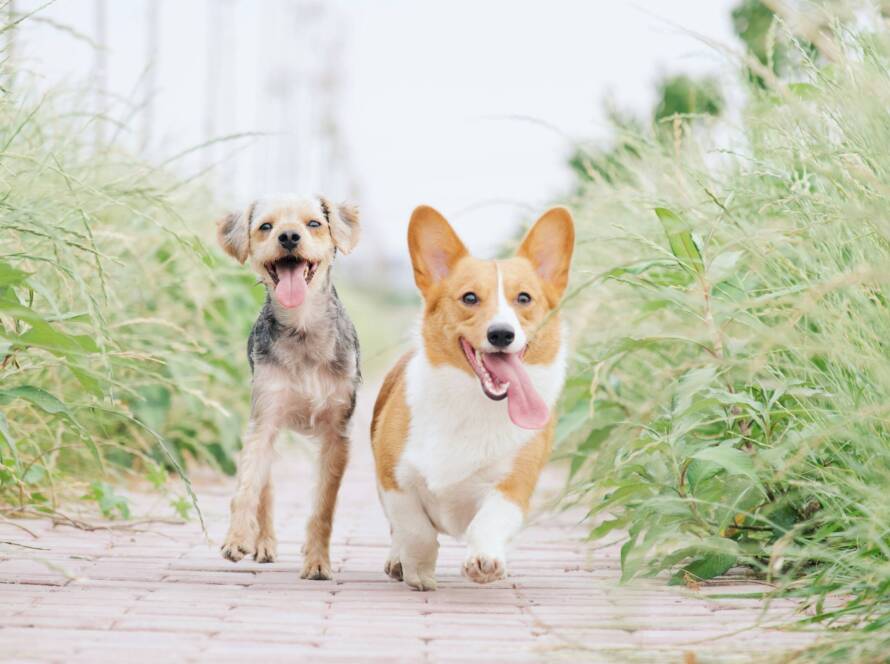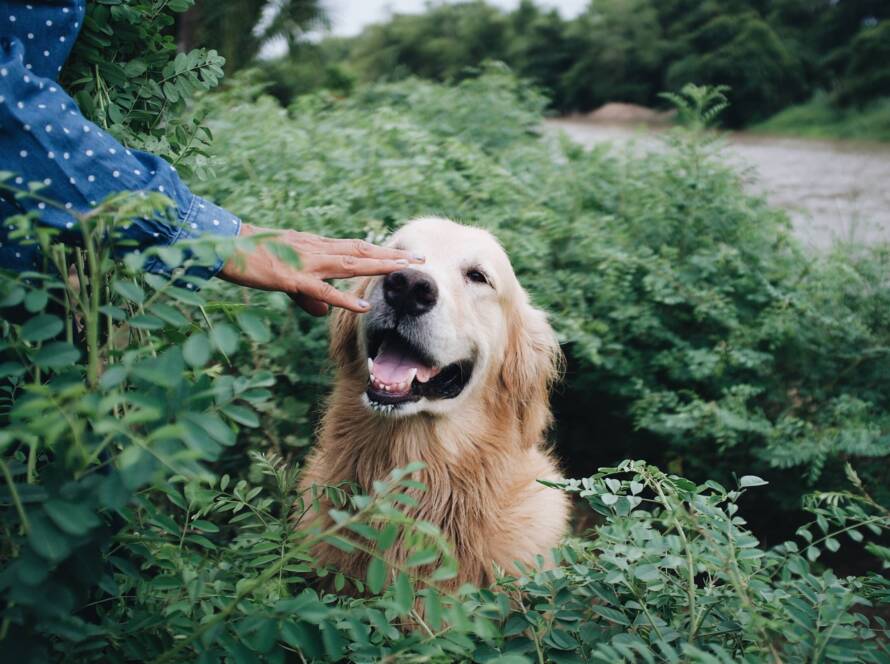Bathing serves as an essential part of basic dog care for your developing canine companion. A well-planned bathing schedule enables odour control, while extracting dirt particles/allergens, and promotes skin/coat wellness. Through bathing, you can detect early signs of health issues, including fleas, hot spots, and dryness, while developing positive handling skills that will simplify future grooming procedures.
Puppies have delicate skin that requires special care. Bathing your dog too frequently or applying harsh non-canine products to their skin will remove natural oils and break down the skin barrier, leading to skin irritation and flaking. The objective is to strike a balance that maintains health and comfort while preserving the developing skin. The bond between you and your pup becomes stronger when bath time remains peaceful and rewarding, while following a predictable schedule.
Factors That Affect Bathing Frequency
You should establish a schedule based on the distinctive characteristics of your puppy. The correct bathing schedule depends on your dog’s coat type and daily activities, together with their skin health status, rather than their age.
Key considerations include:
- Breed and Coat Type: The length and texture of your dog’s coat determine their bathing needs because long and curly or continuously growing coats require more maintenance than short coats that shed naturally. The frequency of washing depends on oily coats, but dry or fine coats require less frequent bathing with gentle products.
- Activity Level: Puppies who spend most of their time outdoors in dirty environments need baths more frequently than dogs who stay mostly indoors.
- Skin Sensitivity and Health Conditions: The frequency of bathing and shampoo selection depends on your dog’s skin sensitivity level and any existing health conditions, including allergies, dandruff (seborrhea), and mild infections. Your veterinarian should provide instructions about using medicated shampoos.
- Age and Developmental Stage: Young skin requires gentle care because of its sensitive nature. Use lukewarm water and choose puppy-specific shampoos while keeping bath time short, and create positive experiences for your puppy.
Check the bathing schedule when your puppy develops a quick odour, visible dirt, or greasiness. Check your dog’s skin condition by extending the time between baths while evaluating shampoo products.
Recommended Bathing Schedules
Every puppy is different, but most healthy pups do well with a baseline routine and thoughtful adjustments.
A practical starting point:
- Most Puppies: Every 3-8 weeks.
- Long/Curly or Continuously Growing Coats (e.g., Poodle Mixes): Align bathing with regular grooming, often every 6-8 weeks, with consistent brushing between baths.
- Very Active or Oily-Coated Pups: Slightly more frequent, as needed, to manage odour and buildup while watching for signs of dryness.
Tailor as you go:
- If brushing keeps the coat clean and fresh, lengthen the interval.
- If odour or residue returns sooner, shorten it modestly.
- Keep notes after each bath (products used, coat condition, timing) to find your puppy’s “sweet spot.”
Seasonal considerations in Canada:
- Winter: Salt, slush, and dry indoor air can irritate skin and paws. Rinse paws and undercarriage after walks and moisturize as advised by your vet; reserve full shampoos for when they’re truly needed.
- Summer: After lake, ocean, or pool time, rinse thoroughly to remove chlorine, salt, algae, or sand. Dry well, especially in dense coats and skin folds.
Remember that schedules are guides, not rules. Your puppy’s skin and comfort always come first.
Safe Bathing Practices
A few small choices go a long way in protecting sensitive puppy skin and making the experience positive from day one.
Do’s for a healthy, low-stress bath:
- Use Lukewarm Water and a Gentle Puppy-Formulated Shampoo: Canine-specific, pH-balanced formulas help preserve the skin barrier.
- Brush Before the Bath: Removing tangles first prevents mats from tightening when wet and helps shampoo reach the skin.
- Rinse Thoroughly: Leftover product is a common cause of post-bath itch. Rinse until the water runs clear.
- Dry Completely: Towel-dry, then use a low-heat, low-airflow dryer if your puppy tolerates it. Keep the nozzle moving and avoid hot air.
- Keep it Calm: A non-slip mat, gentle handling, and frequent treats teach your puppy that bath time is safe and rewarding.
- Mind Preventive and Treatments: If your dog uses topical flea/tick products, plan baths around label guidance (often staying dry for a day or two after application).
If stress surfaces (shivering, vocalizing, trying to escape), slow down. Shorten the session, add more rewards, and consider breaking the bath into mini-steps across a few days to rebuild confidence.
Alternatives to Full Baths
Not every mess requires a full shampoo. Strategic in-between care keeps your puppy clean while protecting the skin barrier.
Easy options between baths:
- Spot Cleaning: Use a damp cloth or dog-safe wipes for muddy paws, bellies, and faces, especially helpful during winter to remove road salt.
- Regular Brushing: Brushing lifts dirt, reduces odour, and distributes natural oils, often delaying the need for a full bath.
- Paw and Face Care: Rinse paws after salty sidewalks or beach days, and gently wipe the face rather than pouring water near eyes and ears.
These quick wins save time and skin: by handling small messes promptly, you can extend the interval between full baths without sacrificing cleanliness or comfort.
Common Bathing Mistakes to Avoid
Even well-meaning routines can backfire. Steer clear of these pitfalls to keep your puppy’s skin and coat healthy.
Watch out for:
- Overbathing or Underbathing: Too many shampoos can dry skin; too few allow odour, allergens, and oil buildup. Aim for the middle ground that suits your pup.
- Using Human Shampoos or Harsh Products: Canine skin differs from ours; stick with puppy-safe formulas and follow label directions.
- Bathing Right After Vaccinations or During Illness: Puppies may feel sore or tired post-vaccine; check with your veterinarian before adding stress.
- Poor Rinsing or Incomplete Drying: Residual shampoo and trapped moisture are frequent causes of itch, dandruff, and hot spots.
A quick self-check after each bath: does your puppy seem comfortable (no persistent scratching), smell neutral, and have a soft, residue-free coat? If not, adjust technique, products, or timing.
Signs Your Puppy May Need a Bath Sooner
Even with a good schedule, life happens: mud puddles, beach adventures, and mystery smells are part of puppyhood.
Bathe sooner if you notice:
- Visible dirt or mud on the coat or undercarriage.
- Unpleasant odour or oily feel, even after brushing.
- Skin irritation or itching that improves with a gentle cleanse (ongoing issues warrant a veterinary visit).
- Post-swim residue from lakes, oceans, or pools; rinse promptly and dry thoroughly, including between toes and in skin folds.
A quick rinse followed by thorough drying will serve as a temporary solution until the next full shampoo session, particularly for dogs with dense or double coats.
Quick Guide for Your Top Questions
The following answers will simplify your research because they match what dog owners frequently ask when searching online.
- How often should you wash your dog? The frequency depends on several factors. Healthy dogs require bathing only when necessary, which is between 3-8 weeks, depending on their coat type, activity level, and seasonal changes.
- How often should you bathe a puppy? Start with monthly as a baseline. Bath time should be increased when odour or visible grime appears, but skin dryness requires longer intervals between baths and product assessment.
- How to bathe a puppy? The bathing process begins with brushing, followed by using lukewarm water and puppy-specific shampoo while avoiding the eyes and ears, finishing with thorough rinsing and complete drying. The bathing process should remain brief while providing rewards to the puppy.
These guidelines serve as initial references that you should modify according to your puppy’s specific requirements. Your observations, combined with consistency, will reveal which methods are effective.
A well-designed bathing schedule that maintains cleanliness while protecting skin health transforms grooming into an opportunity for bonding instead of a task. You should begin with a practical bathing schedule while selecting dog-friendly products, and monitor your puppy’s skin and coat reaction to these products. You should brush your dog between baths while performing spot cleaning and adjust your bathing frequency according to Canada’s seasonal changes.
Above all, keep it positive. Your puppy will develop bath safety understanding through brief peaceful sessions that include plenty of rewards. Consult with your veterinarian about skin conditions when you notice persistent itchiness, redness, or unusual odour, and they can help you create a medicated shampoo treatment plan if necessary. The correct approach will allow you to maintain your puppy’s freshness while keeping them comfortable and confident, starting from their first bath experience.




